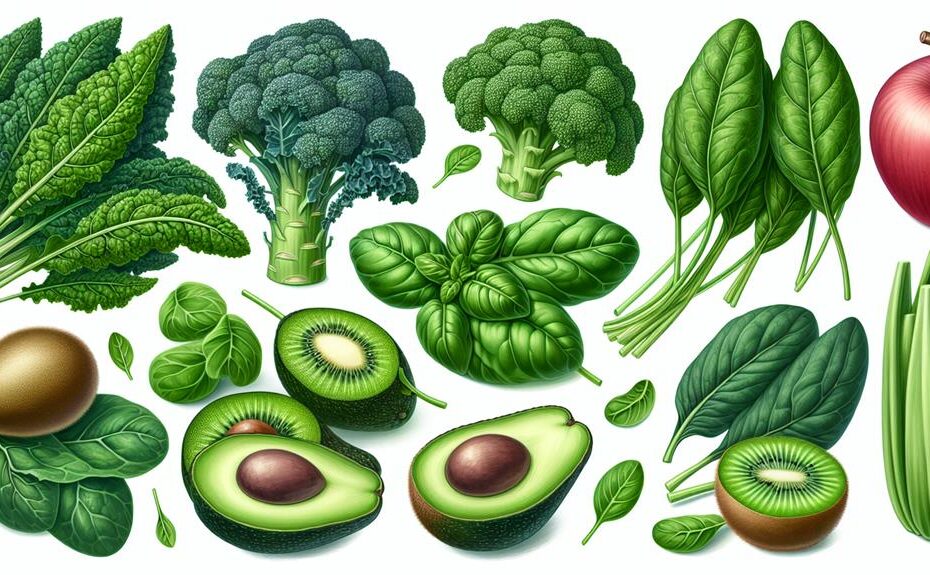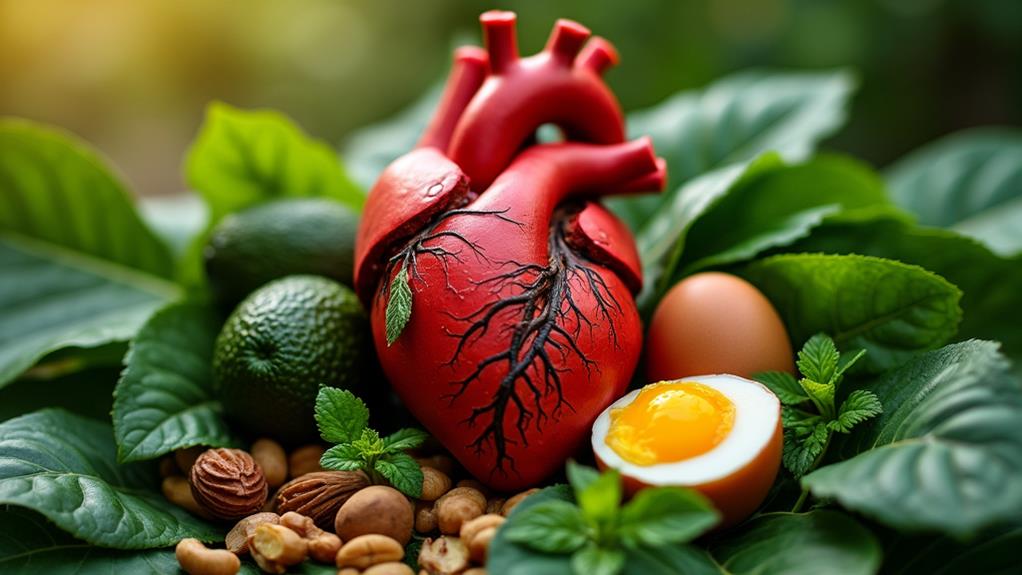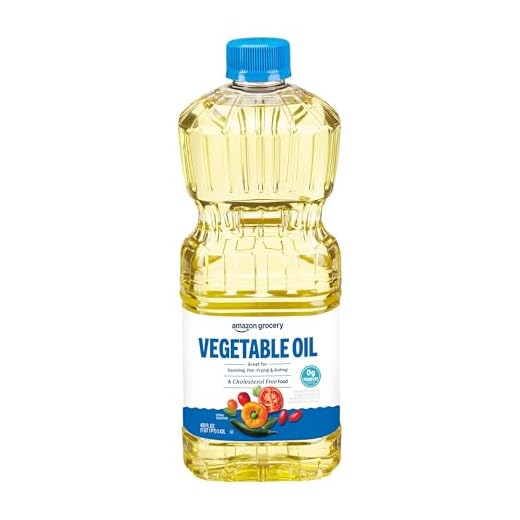







To get Vitamin K1 from food, focus on leafy greens like spinach, kale, and Swiss chard. Try steaming or sautéing for better absorption. Incorporate cruciferous veggies such as broccoli and Brussels sprouts into your meals. Opt for light steaming or stir-frying. Use vegetable oils like soybean, canola, or olive oil in cooking. Experiment with different fruits, nuts, seeds, and herbs for variety. Include legumes, dairy, and meat or fish in your diet. These sources can provide essential Vitamin K1 for blood clotting and bone health. Make sure to diversify your choices of Vitamin K1 foods.
Key Takeaways
- Leafy green vegetables like spinach and kale are rich sources of Vitamin K1.
- Cruciferous vegetables such as broccoli and Brussels sprouts also provide Vitamin K1.
- Vegetable oils like soybean and olive oil contain Vitamin K1.
- Fruits like kiwi and blueberries are sources of Vitamin K1.
- Nuts, seeds, and herbs like walnuts and parsley contribute to Vitamin K1 intake.
Leafy Green Vegetables
Leafy green vegetables such as spinach, kale, and Swiss chard are excellent dietary sources of Vitamin K1, essential for maintaining healthy blood clotting function. When it comes to maximizing nutrient absorption from these vegetables, consider cooking methods. While consuming raw leafy greens is beneficial, light cooking methods like steaming or sautéing can help break down the plant cell walls, making the Vitamin K1 more bioavailable for your body to absorb.
Steaming leafy greens is a particularly effective cooking method as it helps retain the nutrients better than boiling, where some of the vitamins may leach into the water. By lightly steaming your spinach or kale, you can enhance the taste while also preserving the nutritional value. Sautéing with a bit of olive oil and garlic can also be a flavorful way to prepare these vegetables while still maintaining their nutrient content. Experiment with different cooking techniques to find the one that suits your taste buds and preserves the essential nutrients these leafy greens have to offer.
Cruciferous Vegetables
Cruciferous vegetables, such as broccoli and Brussels sprouts, are rich sources of Vitamin K1, important for supporting proper blood clotting function. These vegetables offer a multitude of nutritional benefits beyond their vitamin content. They are packed with fiber, vitamins C and E, and various antioxidants that support overall health. When it comes to cooking these nutrient-dense veggies, there are a few tips to keep in mind. To retain the maximum amount of Vitamin K1 and other nutrients, it is best to lightly steam or stir-fry cruciferous vegetables instead of boiling them excessively. Overcooking can lead to nutrient loss. Additionally, pairing them with sources of healthy fats like olive oil or nuts can help enhance the absorption of fat-soluble vitamins present in these vegetables. By incorporating cruciferous vegetables into your meals and cooking them thoughtfully, you can maximize their nutritional benefits and enjoy their unique flavors and textures.
Vegetable Oils
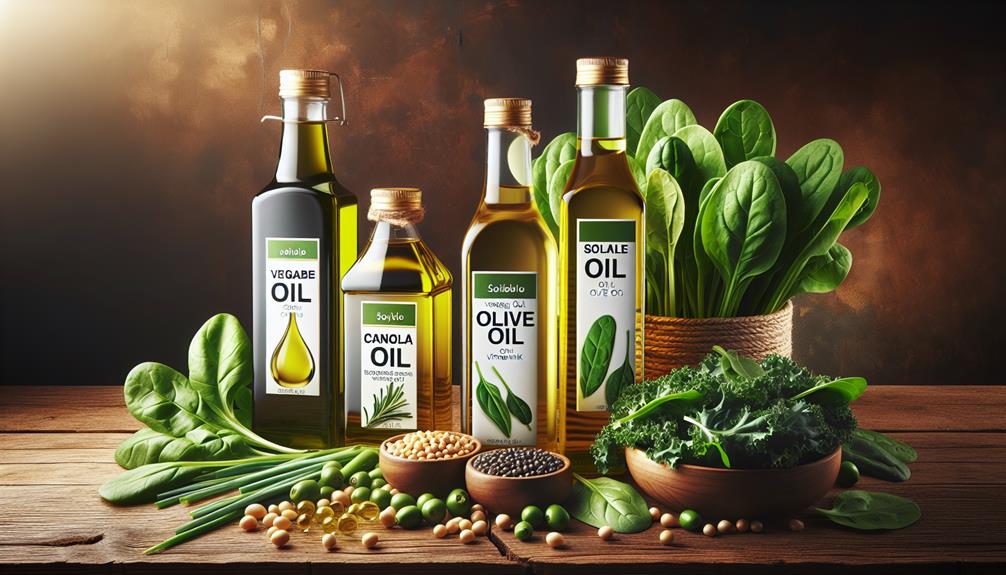
When considering dietary sources of Vitamin K1, vegetable oils play a significant role in providing this essential nutrient for maintaining proper blood clotting function. Vegetable oils are rich in Vitamin K1, with options like soybean oil, canola oil, and olive oil being particularly remarkable.
Cooking methods can affect the Vitamin K1 content in vegetable oils. Light cooking methods such as sautéing or using vegetable oils as salad dressings are better for preserving the nutrient compared to heavy frying, which can lead to significant losses.
In addition to being a good source of Vitamin K1, vegetable oils offer various nutritional benefits. They are high in heart-healthy unsaturated fats, which can help reduce bad cholesterol levels when used in place of saturated fats. These oils also contain vitamin E, an antioxidant that helps protect cells from damage.
Incorporating a variety of vegetable oils into your cooking routine can not only enhance the flavor of your dishes but also contribute to your daily intake of Vitamin K1 and other essential nutrients.
Fruits
Seeking which fruits are rich sources of Vitamin K1 for your dietary needs? Explore no more! While fruits are not as widely recognized for their Vitamin K1 content as vegetables, some can still contribute to your daily intake. Fruits like kiwi, blueberries, and figs contain moderate amounts of Vitamin K1. Kiwi, for instance, provides about 72 mcg of Vitamin K1 per fruit. Blueberries offer around 19 mcg per cup, and figs contain approximately 6 mcg in a half-cup serving.
Apart from their Vitamin K1 content, fruits are packed with other essential nutrients and antioxidants that offer various health benefits. Incorporating a variety of fruits into your diet can help enhance your overall nutritional intake and support your well-being. To boost your Vitamin K1 consumption, consider adding these fruits to your diet or creating delicious smoothie recipes that combine them. These smoothies not only provide a convenient way to enjoy fruits but also offer a tasty and nutritious option to meet your daily nutrient needs.
Nuts and Seeds
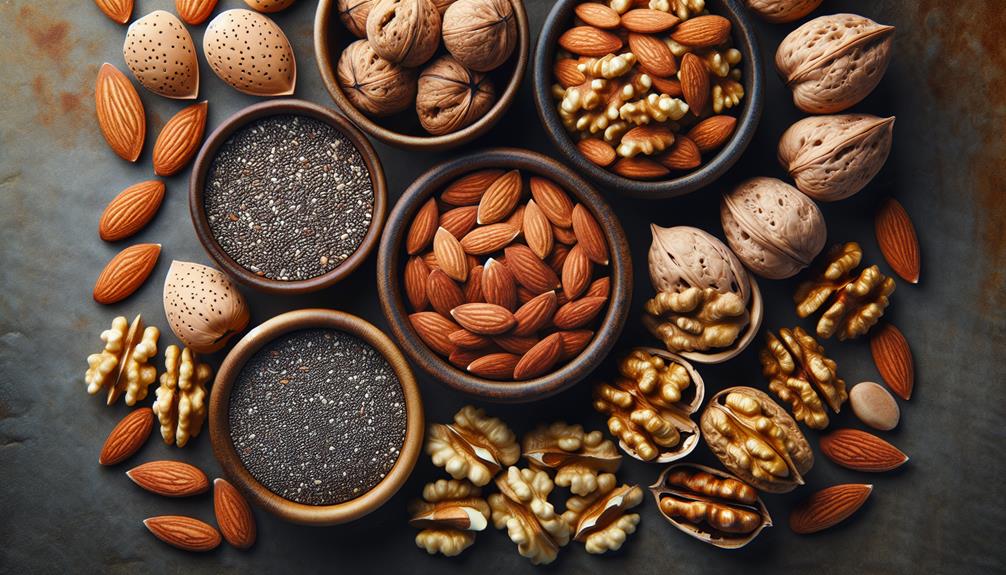
For individuals looking to increase their intake of Vitamin K1, incorporating nuts and seeds into your diet can be a beneficial strategy. Nuts and seeds are excellent sources of Vitamin K1, providing essential nutrients along with their crunchy texture and rich flavors. Walnuts, pine nuts, and pumpkin seeds are particularly high in Vitamin K1, offering numerous nutritional benefits. These include supporting bone health, blood clotting, and overall immune function.
Incorporating nuts and seeds into your meals can be easy and delicious. You can sprinkle crushed walnuts on top of salads, oatmeal, or yogurt for an added crunch and a boost of Vitamin K1. Pine nuts can be toasted and added to pasta dishes or used to make pesto sauce. Pumpkin seeds are versatile and can be enjoyed roasted as a snack, sprinkled on soups, or mixed into baked goods for an extra nutrient kick. Experimenting with different nuts and seeds in your cooking can elevate the flavor profile of your dishes while also increasing your intake of Vitamin K1.
Herbs and Spices
Exploring a diverse range of herbs and spices can greatly enhance your dietary intake of Vitamin K1, offering both flavor diversity and essential nutrients. Herbs like parsley, cilantro, and basil, as well as spices such as paprika, cayenne pepper, and curry powder, are excellent sources of Vitamin K1. Incorporating these flavorful ingredients into your meals not only adds a delicious taste but also boosts your nutrient intake.
When cooking with herbs and spices, consider adding fresh herbs towards the end of the cooking process to retain their flavor and nutrients. For dried herbs, it's best to add them earlier to allow their flavors to infuse into the dish. These cooking tips can help maximize the benefits of Vitamin K1 present in herbs and spices.
In addition to their culinary uses, herbs and spices offer various health benefits. They are rich in antioxidants, anti-inflammatory compounds, and vitamins, contributing to overall well-being. By incorporating a variety of herbs and spices into your diet, you can not only enhance the taste of your meals but also support your health.
Grains and Cereals
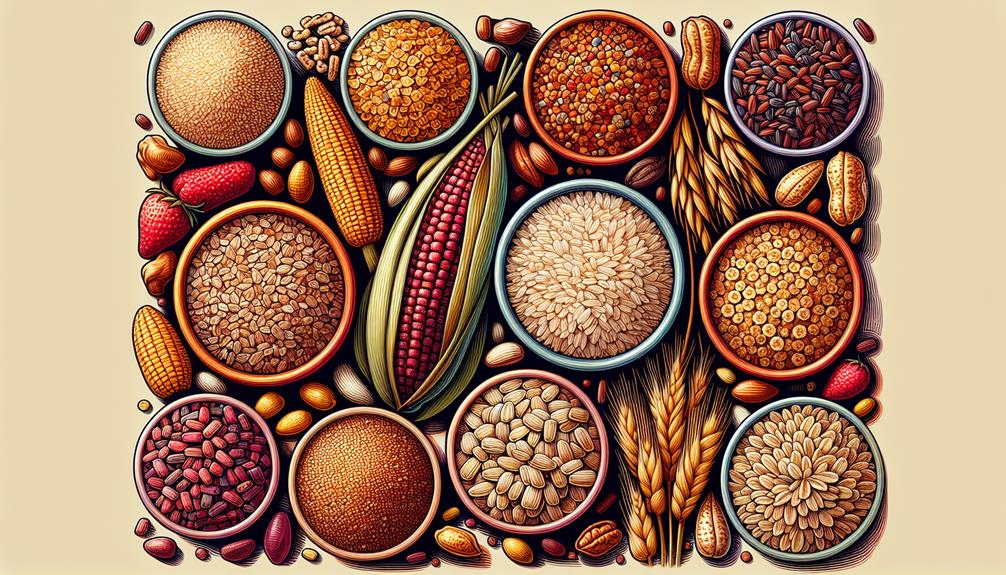
Incorporating a range of whole grains and cereals in your diet can greatly enhance your intake of Vitamin K1, offering essential nutrients for overall health. Whole grains like wheat, oats, and barley are rich sources of Vitamin K1. Breakfast cereals, especially those fortified with vitamins and minerals, can also be a beneficial source of this essential nutrient. When selecting breakfast cereals, opt for whole grain varieties that provide fiber and other important nutrients along with Vitamin K1.
Whole grains, in addition to providing Vitamin K1, offer a myriad of health benefits such as improved digestion, reduced risk of chronic diseases like heart disease and type 2 diabetes, and better weight management. Consuming a variety of whole grains and cereals can not only boost your Vitamin K1 intake but also contribute to a well-rounded and nutritious diet. Be mindful of choosing whole grain options over refined grains for maximum health benefits.
Legumes
To further expand your intake of essential nutrients like Vitamin K1, consider incorporating legumes into your diet as they offer a valuable source of this important nutrient. Legumes, including beans, lentils, and chickpeas, are not only rich in fiber and protein but also contain significant amounts of Vitamin K1. Consuming legumes can enhance nutrient absorption due to their fiber content, which helps with digestion and overall gut health.
When preparing legumes, consider different cooking methods to maximize their nutritional benefits. Boiling, steaming, or pressure cooking legumes are great ways to retain the Vitamin K1 content while ensuring they are cooked thoroughly. These methods help break down the anti-nutrients present in legumes, making the nutrients more bioavailable for your body to absorb.
Incorporating legumes into your meals can be a versatile and nutritious way to boost your Vitamin K1 intake. Experiment with different legume varieties and cooking techniques to enjoy the benefits of this essential nutrient.
Dairy Products

Dairy products provide a rich source of Vitamin K1 essential for maintaining overall health and well-being. In addition to Vitamin K1, dairy products are also known for their high calcium content, which is essential for bone health. Incorporating dairy into your diet can help guarantee you are meeting your Vitamin K1 and calcium needs.
When choosing dairy products for their Vitamin K1 content, consider options like milk, yogurt, and cheese. These products not only provide Vitamin K1 but also offer a range of other essential nutrients beneficial for your health.
However, if you are lactose intolerant or prefer dairy alternatives, there are various options available. Fortified plant-based milk alternatives like almond milk, soy milk, or oat milk can be good sources of both calcium and Vitamin K1. Additionally, fortified dairy-free yogurts and cheeses are becoming more accessible in the market, providing alternatives for those who cannot consume traditional dairy products.
Meat and Fish
Meat and fish are valuable dietary sources of Vitamin K1, essential for supporting various aspects of your health and well-being. When it comes to protein sources, meat, such as beef, chicken, and pork, provides a significant amount of Vitamin K1. Incorporating these protein-rich foods into your diet can help guarantee you meet your daily Vitamin K1 requirements. Additionally, fish, particularly fatty fish like salmon, mackerel, and sardines, are not only excellent sources of Omega-3 fatty acids but also contain Vitamin K1. These Omega-3 sources offer a double benefit by providing heart-healthy fats along with the essential Vitamin K1 your body needs.
Including a variety of meat and fish in your meals can contribute to a well-rounded diet that supports your overall health. Whether you prefer a juicy steak or a grilled salmon fillet, these food options can help you maintain adequate levels of Vitamin K1 while also benefiting from their protein and Omega-3 content.
